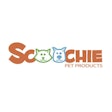
The overall number of new products introduced into the pet food market declined during the now-endemic pandemic. However, the sales value of those new pet foods and treats grew. Sam Smith, associate client director at NielsenIQ, shared data on pet food innovation during his Global Pet Expo 2024 presentation on March 20 in Orlando, Florida, USA.
“The number of new UPCs being launched is shrinking year over year,” Smith said. “Innovation isn't as broadly spread, as it used to be, where tons of items are introduced in the market. Margins are tighter. R&D spending is harder.”
However, this doesn’t mean that the innovation bubble has burst. The supply chain disruptions of the pandemic made it difficult for pet food makers to get established products onto shelves, much less develop new ones.
“If we can't fill their shelves with the everyday items, why would they talk to us about new products?” Joe Toscano, vice president and director of trade and industry development at Nestlé Purina, told Petfood Industry. “Now that we're getting to a spot where we're in a better position there, we can bring our innovation back to the market. As we go forward, we get back to more of a robust new item program.”
Pet food ingredient supply chains have definitely stabilized, David McLain, CEO and president of Alphia, said.
"We really struggled during COVID," McLain said. "Some of our meats come out of the food service industry. When restaurants weren't operating, we had a lot of trouble. There was a lot of trouble getting ships into ports. Like tapioca, tapioca is a super premium ingredient. You couldn't get tapioca for a couple of months. But, those are now perfectly fine."
Pet food innovation is profitable
Although the new product pipeline slowed in 2020, that smaller quantity of new pet consumables brings in more profits, Smith said. In general, new products tend to see a surge in sales the year after they are launched, even before the supply chain squeeze of the pandemic. That second-year increase that market analysts see now may have been boosted by inflation, but also seems to reflect higher revenues from new products overall.
“The amount of items being launched in the market has gone down period over period,” Smith said. “But, inversely, the sales value of those items has increased year over year. You're having more successful launches, but a smaller triage, so to speak, of those items being launched. So this is a great time for innovation.”
New product development may have become more precise and accurate by launching fewer, but better-targeted, products into the market. Instead of throwing new pet foods against the wall to see what sticks, innovators are tossing darts at specific market niches.
Among the wider pet products market, consumables have been especially profitable, he said.
“That's where the true innovation success is coming out,” he said. “I'm sure we've all seen that supplements have been huge, toppers have been huge, freeze-dried hybrid, along with all the different niche and alternative diets.”
These products are both more expensive than conventional diets and meet consumer demands.
“It's making pet food a very successful place to launch new items and a test innovation,” Smith said.

















